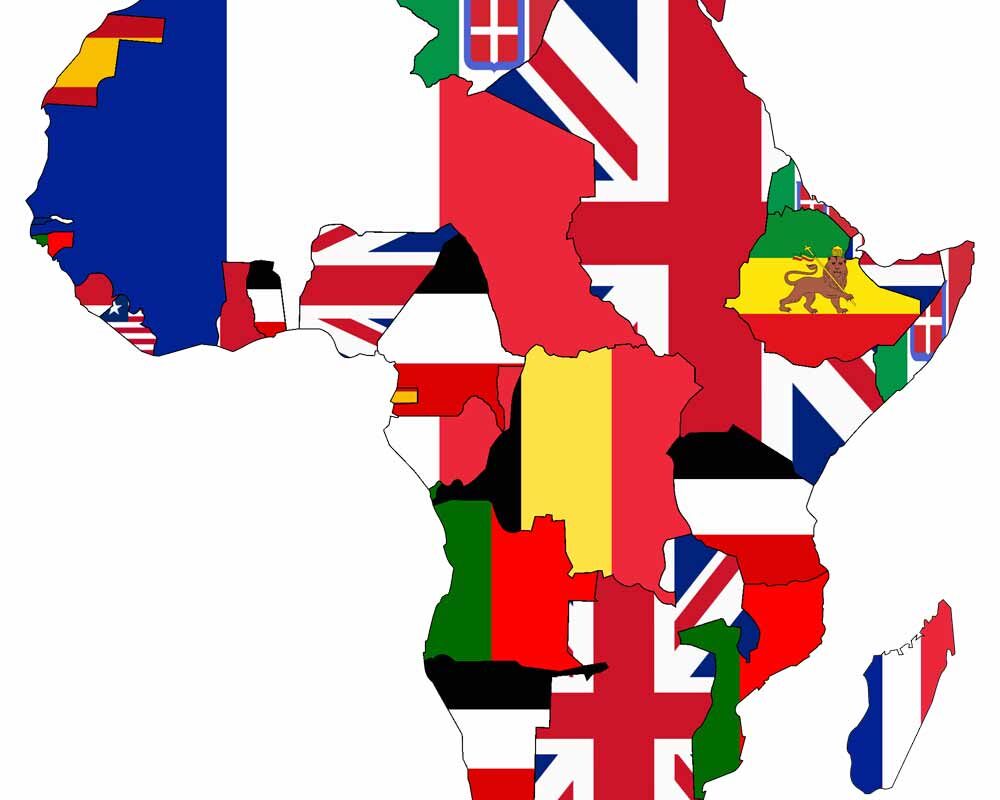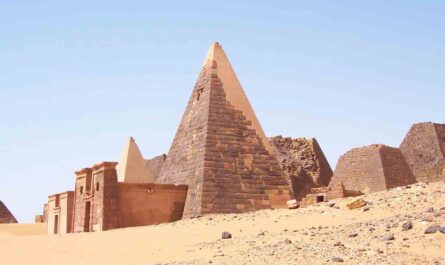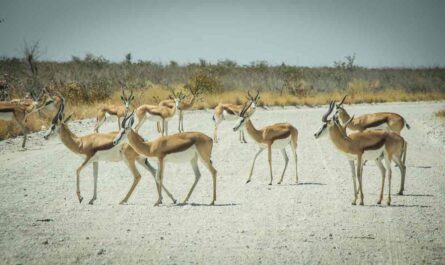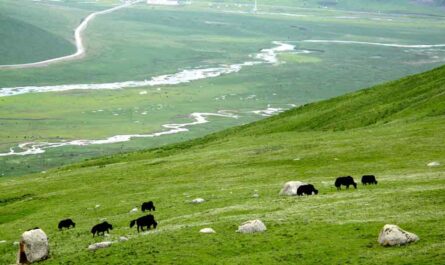What are some of the interesting facts about Botswana? Botswana, a landlocked country in Southern Africa, stands as a beacon of stability and economic growth amidst the continent’s dynamic landscape. Bordered by Namibia to the west and north, Zimbabwe to the northeast, and South Africa to the south, Botswana encompasses diverse terrains ranging from the Kalahari Desert in the southwest to the lush Okavango Delta in the northwest, attracting nature enthusiasts and adventurers alike. Since gaining independence from British colonial rule in 1966, Botswana has experienced remarkable political stability, fostering an environment conducive to sustainable development and democratic governance. In this article, I will talk about some interesting facts about Botswana. Keep reading.
In recent years, Botswana has emerged as a model of sustainable tourism, offering visitors an authentic African experience while safeguarding its natural heritage. As the country looks towards the future, it continues to navigate challenges such as income inequality and diversifying its economy beyond mining. Nonetheless, Botswana remains a testament to resilience, where tradition and modernity converge against a backdrop of breathtaking landscapes and vibrant cultural tapestry.
Interesting Facts About Botswana: History, Culture, Travel
The country’s success story is underpinned by its prudent management of natural resources, particularly its diamond wealth, which has propelled Botswana into becoming one of Africa’s most prosperous nations. This economic stability has enabled significant investments in education, healthcare, and infrastructure, bolstering the quality of life for its approximately 2.3 million inhabitants. Moreover, Botswana’s commitment to wildlife conservation is renowned globally, with initiatives such as the Chobe National Park and Moremi Game Reserve providing sanctuary to a rich diversity of fauna, including elephants, lions, and zebras. Here are some interesting facts about Botswana:
1. Land of Contrasts
Botswana, a land of striking contrasts, captivates with its diverse and dramatic landscapes. From the verdant expanses of Chobe National Park teeming with wildlife to the vast expanse of the Kalahari Desert, Botswana offers a tapestry of ecosystems unrivaled in their natural beauty. The lush Okavango Delta, a UNESCO World Heritage Site, stands as a testament to nature’s ingenuity, transforming a river’s flow into a flourishing oasis amidst the desert.
Each landscape, from the rolling savannahs to the rugged mountain ranges, harbors unique flora and fauna adapted to their surroundings. Botswana’s commitment to conservation ensures these natural wonders endure, providing sanctuaries for endangered species and preserving ecological balance. Whether exploring the wetlands of Moremi Game Reserve or marveling at the granite hills of Tsodilo, Botswana’s landscapes invite exploration and evoke a profound appreciation for the wonders of the natural world.
2. Okavango Delta: A Jewel in the Desert
The Okavango Delta affectionately called the jewel of the Kalahari, is a marvel of nature nestled in Botswana’s arid heartland. This vast inland delta, recognized as a UNESCO World Heritage Site, defies convention by transforming an ephemeral river’s flow into a thriving ecosystem of lagoons, channels, and islands. Seasonal floods replenish the delta’s waters, sustaining an abundance of wildlife year-round. Hippos wallow in the shallows, while herds of elephants navigate labyrinthine waterways, and lions prowl the fringes in search of prey.
The delta’s biodiversity, from rare birds to elusive predators, attracts wildlife enthusiasts and researchers alike, offering unparalleled opportunities for safari adventures and ecological studies. Local communities, adept at living in harmony with nature, share their cultural heritage through guided tours and immersive experiences that celebrate the delta’s ecological significance. The Okavango Delta stands as a testament to resilience, adaptation, and the enduring beauty of Botswana’s natural heritage.
3. Gaborone: The Bustling Capital
Gaborone, Botswana’s dynamic capital city, epitomizes modernity amidst the nation’s natural splendor. Founded in the 1960s, Gaborone has evolved into a bustling hub of government institutions, commercial enterprises, and cultural attractions. Modern skyscrapers mingle with sprawling suburbs, creating a vibrant urban landscape framed by acacia trees and manicured parks. The city’s cosmopolitan character is reflected in its diverse population, bustling markets, and eclectic culinary scene.
Museums, such as the National Museum and Art Gallery, showcase Botswana’s rich history and cultural diversity, while traditional craft markets offer handmade artifacts and souvenirs. Gaborone’s nightlife pulses with energy, from trendy bars and restaurants to live music venues that cater to locals and visitors alike. As Botswana’s administrative and economic center, Gaborone embodies the nation’s spirit of innovation, growth, and inclusivity amidst a rapidly changing global landscape.
4. More Elephants Than People
Botswana, renowned for its commitment to wildlife conservation, boasts a remarkable distinction: it harbors a larger population of elephants than humans. This testament to the nation’s dedication to preserving natural heritage underscores Botswana’s status as a sanctuary for wildlife. Across vast landscapes, from the Okavango Delta to Chobe National Park, elephants roam freely, symbolizing harmony between humans and nature.
Conservation efforts, including anti-poaching initiatives and habitat protection measures, ensure these majestic creatures thrive in their natural habitats. The coexistence of elephants and communities exemplifies Botswana’s sustainable approach to wildlife management, fostering pride and responsibility in safeguarding biodiversity for future generations.
5. Mokolo: The National Beer
Mokolo, a traditional beer brewed from sorghum, holds a cherished place in Botswana’s culinary and cultural traditions. This indigenous beverage is central to social gatherings, celebrations, and rituals, reflecting communal values and hospitality. Brewed by women in rural villages, Mokolo embodies craftsmanship passed down through generations, blending flavors of malt and sorghum with a hint of sweetness.
Its earthy aroma and refreshing taste evoke a sense of belonging and conviviality among friends and family. Mokolo’s popularity transcends ethnic boundaries, uniting Botswana’s diverse communities in a shared appreciation for local flavors and cultural heritage. As a symbol of resilience and cultural pride, Mokolo continues to play a vital role in Botswana’s social fabric, fostering connections and preserving culinary traditions amidst modern influences.
6. Seared Meat Specialties
Botswana’s culinary landscape is enriched by seared meats, such as seswaa (beef) and serobe (chicken), cherished staples that epitomize the nation’s hearty cuisine. Prepared with meticulous care and culinary expertise, these dishes showcase Botswana’s culinary craftsmanship and cultural diversity. Seswaa, tender shredded beef slow-cooked to perfection, symbolizes communal feasting and festive occasions, accompanied by flavorsome gravies and traditional side dishes like morogo (wild spinach).
Serobe, succulent chicken liver and tripe sautéed with onions and spices offers a savory delight steeped in tradition and culinary heritage. Both dishes are often served with pap, a staple cornmeal porridge that complements their robust flavors and textures. Seared meat specialties not only satisfy the palate but also celebrate Botswana’s agricultural bounty and culinary ingenuity, inviting diners to savor the essence of local flavors and cultural authenticity.
7. Vibrant Tribal Cultures
Botswana’s cultural mosaic is enriched by vibrant tribal groups, each with distinct traditions and customs that contribute to the nation’s rich cultural tapestry. Indigenous communities, such as the Basarwa (San people) and the Bakalanga, embody ancestral wisdom and resilience passed down through generations. The Basarwa, renowned for their deep connection to the land and hunting skills, preserve traditional knowledge through storytelling and intricate cave paintings that chronicle their history.
The Bakalanga, known for their intricate beadwork and vibrant dance rituals, celebrate milestones with joyful ceremonies that reflect communal unity and spiritual beliefs. Botswana’s tribal cultures foster social cohesion and mutual respect, honoring heritage while embracing modern influences. Festivals, such as the Dithubaruba Cultural Festival, showcase traditional music, dance, and attire, inviting locals and visitors to experience the diversity and vibrancy of Botswana’s cultural heritage.
8. The Chobe National Park
Chobe National Park, a crown jewel of Botswana’s wildlife sanctuaries, captivates visitors with its staggering elephant herds and diverse ecosystems. Nestled along the Chobe River, this pristine wilderness teems with wildlife, from iconic African elephants to elusive big cats and prolific birdlife. Safari enthusiasts embark on river cruises and game drives to witness nature’s spectacle unfold against the backdrop of sweeping savannahs and ancient baobab trees.
Chobe’s elephants, known for their abundance and social behavior, roam freely between seasonal waterholes, offering unparalleled opportunities for wildlife photography and immersive safaris. Conservation efforts within the park, including community-based initiatives and sustainable tourism practices, safeguard biodiversity and support local livelihoods. Chobe National Park stands as a testament to Botswana’s commitment to environmental stewardship and wildlife conservation, inviting travelers to experience the magic of Africa’s untamed wilderness.
9. The Moremi Game Reserve
The Moremi Game Reserve, situated in Botswana’s iconic Okavango Delta, is celebrated for its lush landscapes and extraordinary wildlife encounters. This pristine wilderness encompasses diverse habitats, from floodplains to mopane woodlands, providing sanctuary to an array of predators and prey species. Safari aficionados traverse the reserve’s network of trails and waterways, encountering iconic species such as lions, leopards, and African wild dogs in their natural habitats. Moremi’s birdlife is equally impressive, with over 400 avian species inhabiting its wetlands and savannahs, making it a paradise for birdwatchers and nature enthusiasts.
Guided safaris and eco-friendly lodges adhere to sustainable tourism principles, ensuring minimal environmental impact and maximum enjoyment of the reserve’s natural splendor. Moremi Game Reserve exemplifies Botswana’s commitment to conservation and responsible tourism, offering transformative experiences that celebrate the wonders of Africa’s wilderness and inspire a profound appreciation for nature’s beauty.
10. The Makgadikgadi Pans
The Makgadikgadi Pans, a surreal expanse of salt pans, define Botswana’s northern landscape with their ethereal beauty and stark contrasts. These ancient salt flats, remnants of a prehistoric lake bed, sprawl across thousands of square kilometers, punctuated by sparse vegetation and vast horizons. During the rainy season, ephemeral lakes attract migratory birds and wildlife seeking refuge amidst the shimmering expanse. The pans’ desolate terrain transforms into a canvas of color as flamingos flock to the saline waters, painting the horizon pink against the azure sky.
Cultural tours offer insights into the indigenous San people’s nomadic traditions and survival strategies in this harsh environment. Adventure seekers revel in quad biking expeditions across the pans’ crusty surface, experiencing the exhilaration of boundless freedom amidst nature’s grandeur. The Makgadikgadi Pans epitomize Botswana’s ability to awe and inspire, inviting contemplation of the earth’s geological marvels and the resilience of life in the desert’s embrace.
11. The Importance of Diamonds
Diamonds play a pivotal role in Botswana’s economy, fueling development initiatives and shaping the nation’s socio-economic landscape. Discovered in the 1960s, Botswana’s diamond reserves are among the world’s richest, contributing significantly to national revenue and infrastructure investment. The diamond industry managed through partnerships with international mining corporations, supports employment, skills development, and social welfare programs across the country.
Revenue from diamond sales funds education, healthcare, and poverty alleviation initiatives, empowering communities and fostering economic resilience. Botswana’s prudent management of its diamond resources emphasizes transparency, sustainability, and equitable distribution of benefits to ensure long-term prosperity. The diamond sector’s impact extends beyond economic metrics, reflecting Botswana’s commitment to governance, social responsibility, and inclusive growth in harnessing natural resources for the nation’s development.
12. Sustainable Tourism Efforts
Botswana leads by example in sustainable tourism practices, balancing conservation with economic opportunities to safeguard its natural heritage. Recognizing the intrinsic value of its pristine landscapes and diverse wildlife, Botswana implements strict environmental regulations and community-based tourism initiatives. Protected areas, such as Chobe National Park and the Okavango Delta, prioritize low-impact tourism activities that minimize ecological footprint while enhancing visitor experiences. Eco-lodges and safari camps adhere to sustainable practices, from energy efficiency to waste management, promoting responsible travel and environmental stewardship.
Conservation efforts focus on anti-poaching measures, habitat restoration, and wildlife monitoring programs that preserve biodiversity and mitigate human-wildlife conflicts. Botswana’s commitment to sustainable tourism not only supports conservation goals but also fosters socio-economic benefits for local communities, empowering them as custodians of their natural heritage and ambassadors for responsible travel practices globally.
13. The Makgadikgadi Pans Festival
The annual Makgadikgadi Pans Festival stands as a vibrant celebration of art, music, and culture set against the breathtaking backdrop of Botswana’s expansive salt pans. This unique event draws artists, musicians, and cultural enthusiasts from across the globe to converge in a spectacular display of creativity and community spirit. Against the stark beauty of the pans, festival-goers immerse themselves in traditional dance performances, rhythmic drumming, and contemporary music that resonate with the rhythms of Botswana’s diverse cultures. Local artisans showcase their craftsmanship through intricately woven baskets, vibrant beadwork, and handmade pottery, offering visitors a glimpse into Botswana’s rich artistic heritage.
The festival’s cultural exchanges and storytelling sessions foster cross-cultural understanding and appreciation, while culinary delights featuring local delicacies like seswaa and mokoro rides provide immersive experiences in Botswana’s culinary and natural wonders. The Makgadikgadi Pans Festival epitomizes Botswana’s commitment to preserving cultural identity and promoting sustainable tourism, creating lasting memories and forging connections amidst the vast expanse of the salt pans.
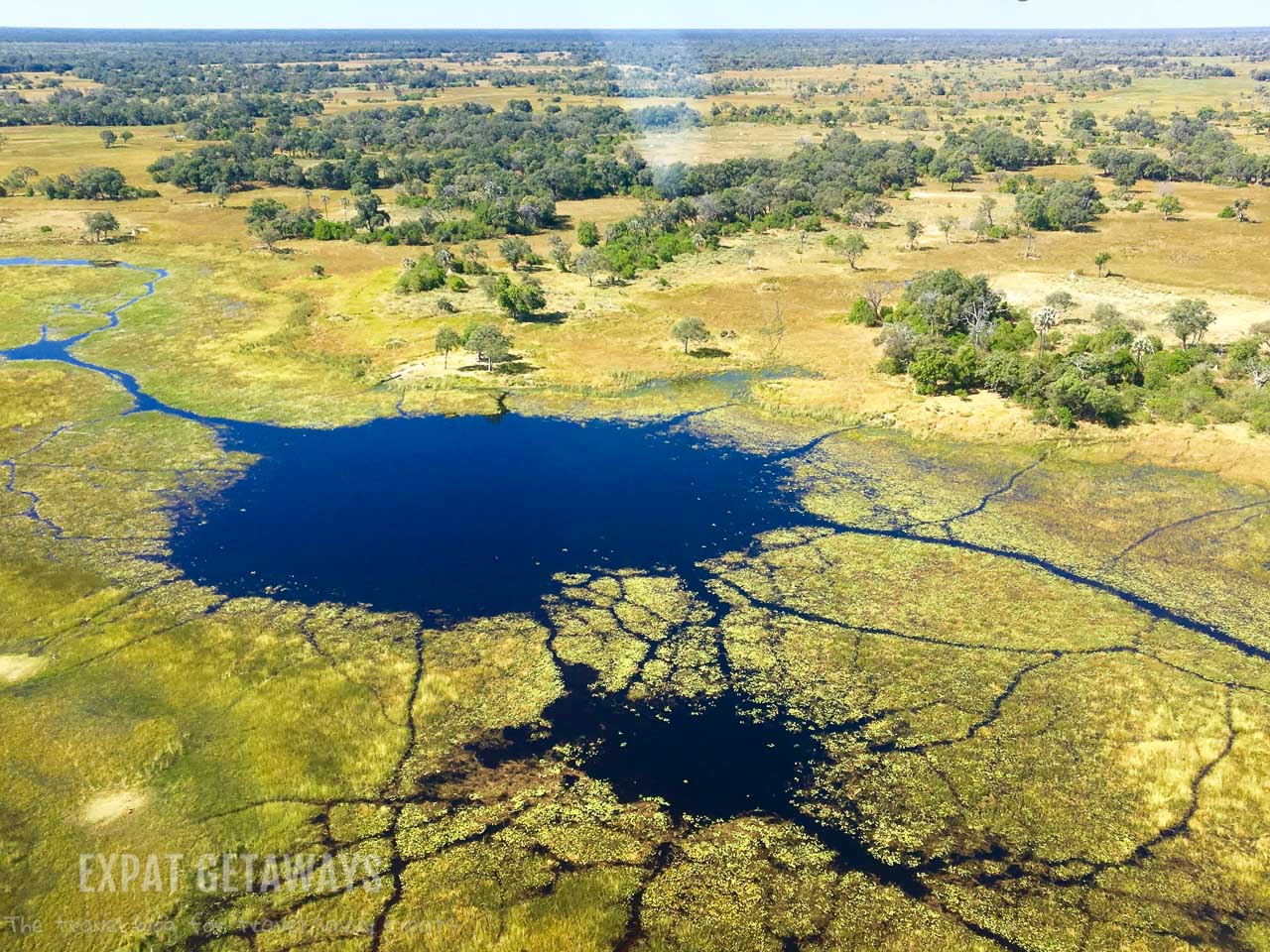
14. The Official Language
Setswana holds the distinction of being Botswana’s official language, reflecting its cultural significance and widespread usage among the nation’s diverse ethnic groups. Rooted in Bantu languages, Setswana serves as a unifying force that bridges linguistic diversity and reinforces national identity. While Setswana is the primary language spoken in daily interactions, English plays a pivotal role in business, government, and educational settings, facilitating communication on regional and international platforms.
The bilingualism inherent in Botswana’s linguistic landscape underscores its commitment to inclusivity and effective governance, enabling citizens to participate actively in socio-economic development and global discourse. Setswana’s expressive nuances and idiomatic expressions enrich cultural expressions such as storytelling, poetry, and music, preserving ancestral wisdom and communal values for future generations. As Botswana embraces modernity while honoring tradition, Setswana and English coexist harmoniously, embodying the nation’s ethos of unity in diversity.
15. The Importance of Basket Weaving
Basket weaving holds a cherished place in Botswana’s cultural heritage, serving as both an artistic tradition and a practical craft that transcends generations. Practiced by various ethnic communities across the country, basket weaving blends natural materials such as ilala palm leaves and mokola grass with intricate weaving techniques passed down through oral tradition. These woven masterpieces, adorned with geometric patterns and vibrant colors, serve functional purposes such as storage, food preparation, and ceremonial gifts.
Beyond their utilitarian value, baskets embody cultural identity and spiritual symbolism, reflecting local beliefs and customs associated with fertility, prosperity, and community cohesion. Skilled artisans, predominantly women, showcase their expertise during community gatherings and cultural festivals, where basketry workshops offer hands-on experiences in traditional craftsmanship. The artistry of Botswana’s baskets transcends borders, captivating collectors and art enthusiasts worldwide with their timeless beauty and cultural significance as tangible expressions of Botswana’s artistic legacy.
16. The Kalahari Desert
The Kalahari Desert, an expansive wilderness covering much of Botswana’s western region, epitomizes resilience and biodiversity adapted to arid conditions. Contrary to its name, the Kalahari supports a rich tapestry of wildlife and plant life uniquely adapted to its semi-arid environment. Thorny acacia trees dot the landscape, providing shade and sustenance for diverse species including antelopes, zebras, and ostriches. Endemic flora such as the iconic camel thorn tree and Kalahari melon thrive amidst shifting sand dunes and rocky outcrops, illustrating nature’s ability to flourish in harsh climates.
The desert’s wildlife, from meerkats to elusive brown hyenas, offers photographers and wildlife enthusiasts unparalleled opportunities for observation and conservation efforts. Indigenous San communities, with deep ancestral ties to the Kalahari, embody traditional knowledge of desert survival and sustainable living practices that sustainably coexist with nature. The Kalahari Desert stands as a testament to Botswana’s commitment to conservation and ecological balance, preserving this fragile ecosystem for future generations to marvel at its natural wonders.
17. The Meerkats of the Makgadikgadi
The Makgadikgadi Pans offer a unique opportunity to observe meerkats in their natural habitat, where these charismatic creatures thrive in family groups known as colonies. Meerkats, renowned for their social behavior and cooperative hunting, captivate visitors with their sentinel posts and playful interactions amidst the vast salt pans. Guided meerkat safaris allow travelers to witness these small carnivores foraging for insects and scorpions, using their keen senses to detect predators and communicate with distinct calls.
The meerkats’ communal lifestyle, led by dominant alpha individuals, offers insights into family dynamics and survival strategies in Botswana’s arid landscapes. As symbols of resilience and adaptability, meerkats inspire conservation efforts that protect their habitats and promote sustainable tourism practices. Observing meerkats in the Makgadikgadi Pans provides a profound connection to nature’s intricacies and the fragile balance between wildlife conservation and responsible travel experiences.
18. The Okavango Delta Boat Safaris
Exploring the Okavango Delta by mokoro, a traditional dugout canoe, offers an intimate and immersive wildlife viewing experience unlike any other in Botswana. Navigating tranquil waterways and flooded plains, skilled polers guide visitors through this UNESCO World Heritage Site, where seasonal floods transform the delta into a lush oasis teeming with wildlife. Mokoro safaris provide close encounters with aquatic species such as hippos and crocodiles, as well as migratory birds and resident species like elephants and buffalo. The delta’s channels and islands reveal diverse ecosystems, from papyrus-lined lagoons to palm-fringed islands that harbor rare plant species and nesting birds.
Guided by local experts, mokoro safaris promote sustainable tourism practices that prioritize minimal environmental impact and authentic cultural exchanges with local communities. The tranquility of gliding through the Okavango Delta’s pristine wilderness evokes a deep appreciation for Botswana’s natural beauty and commitment to conserving this ecological marvel for future generations to cherish and protect.
19. The Importance of Conservation
Botswana stands as a global leader in wildlife conservation, distinguished by its successful initiatives aimed at protecting endangered species and preserving natural habitats. From the iconic elephants of Chobe National Park to the elusive black rhinos of the Okavango Delta, Botswana’s commitment to conservation extends across diverse ecosystems. Rigorous anti-poaching measures and community-based conservation programs ensure the sustainability of wildlife populations and promote eco-tourism as a means of fostering local economies.
Collaborative efforts with international organizations and research institutions further enhance conservation strategies, facilitating scientific monitoring and habitat restoration projects. Botswana’s conservation successes, exemplified by the recovery of key species and expanding protected areas, underscore the nation’s dedication to environmental stewardship and biodiversity conservation for future generations to appreciate and enjoy.
20. The Tsodilo Hills
The Tsodilo Hills, a UNESCO World Heritage Site nestled in Botswana’s northwestern corner, are adorned with ancient rock paintings that offer a poignant glimpse into the lives and spiritual beliefs of early inhabitants. These majestic granite hills, towering over the surrounding savannahs, hold sacred significance for local San communities, who revere them as a repository of ancestral wisdom and cultural heritage.
The rock art, dating back thousands of years, depicts scenes of daily life, hunting expeditions, and ritual ceremonies, providing invaluable insights into prehistoric artistry and storytelling traditions. Guided tours to Tsodilo Hills invite visitors to explore the labyrinthine caves and cliffs adorned with vibrant pigments, evoking a sense of reverence and wonder at the intersection of human creativity and natural beauty. As guardians of this cultural treasure, Botswana preserves the Tsodilo Hills as a living testament to the enduring legacy of its indigenous peoples and their enduring connection to the land.
21. The Chobe River
The Chobe River, a lifeline for wildlife in northern Botswana, meanders through lush floodplains and dense riverine forests, offering breathtaking scenery and unparalleled opportunities for wildlife viewing. This vital water source sustains an abundance of wildlife, from massive elephant herds bathing along its banks to prowling predators seeking prey at the water’s edge.
Boat safaris along the Chobe River provide intimate encounters with hippos, crocodiles, and diverse birdlife, while sunset cruises reveal the river’s serenity and the golden hues reflecting off its tranquil waters. The Chobe National Park, where the river flows, serves as a sanctuary for iconic species and a hub for eco-tourism activities that support local communities. Conservation efforts focus on preserving the river’s pristine ecosystem and mitigating human-wildlife conflicts, ensuring its enduring role in Botswana’s natural heritage and eco-tourism industry.
22. The Annual Boteti River Migration
The annual zebra migration along the Boteti River is a natural spectacle that captivates wildlife enthusiasts and photographers alike, as thousands of zebras traverse Botswana’s savannahs in search of water and grazing lands. This seasonal migration, influenced by the rhythms of rainfall and grass growth, draws predators such as lions and cheetahs to the riverbanks, creating dramatic scenes of predator-prey interactions.
The Boteti River’s significance as a water source during the dry season underscores its importance in sustaining wildlife populations and supporting ecosystem resilience. Conservation efforts focus on protecting migration corridors and ensuring water availability, balancing human activities with wildlife needs to maintain the integrity of this natural phenomenon. Guided safaris and conservation tours offer opportunities to witness the spectacle firsthand, fostering an appreciation for Botswana’s biodiversity and the interconnectedness of its ecosystems.
23. The Importance of Cattle
Cattle rearing plays a pivotal role in Botswana’s rural economy and cultural traditions, serving as a source of livelihood and symbolizing wealth and social status within communities. Livestock, predominantly cattle, are integral to traditional practices such as bridewealth and ceremonial rituals, reinforcing social bonds and ancestral customs. Herding practices passed down through generations, embody ecological knowledge and sustainable land management techniques that harmonize with Botswana’s semi-arid landscapes.
The beef industry contributes significantly to the nation’s agricultural sector, supporting local economies and domestic food security. As stewards of their livestock, Batswana uphold ethical husbandry practices and resilience in the face of climate variability, ensuring the sustainability of cattle ranching as a cornerstone of Botswana’s agrarian heritage. Cattle represent not only economic prosperity but also cultural resilience, forging connections between past traditions and future aspirations in Botswana’s evolving rural communities.
24. Traditional Music and Dance
Botswana’s cultural vibrancy is exemplified through its rich tapestry of traditional music and dance, which serves as a vibrant expression of community identity and celebration. Diverse ethnic groups, such as the Tswana, Kalanga, and San, showcase distinctive musical styles and rhythmic performances that resonate with historical narratives and communal rituals. Traditional instruments like the segaba (traditional violin) and setinkane (thumb piano) accompany spirited dance forms that reflect life’s milestones, seasonal cycles, and spiritual beliefs.
Festivals and social gatherings provide platforms for artists and performers to share their talents, fostering cultural pride and intergenerational transmission of artistic traditions. Through music and dance, Batswana preserve their heritage, promote social cohesion, and invite visitors to participate in cultural exchanges that celebrate Botswana’s cultural diversity and artistic ingenuity. Whether at traditional ceremonies or modern festivals, traditional music and dance continue to embody the spirit of unity, resilience, and communal harmony that define Botswana’s cultural landscape.
25. The Kgomo Kgomo (Public Meeting)
Kgomo Kgomo, a traditional public meeting in Botswana, holds significant importance in the nation’s democratic fabric and community governance. Translating to “the meeting of the bulls,” Kgomo Kgomo serves as a forum where local issues, concerns, and decisions are deliberated openly among community members. This communal gathering embodies Botswana’s commitment to participatory democracy, fostering transparency, accountability, and collective decision-making at the grassroots level.
Led by community leaders and elders, Kgomo Kgomo discussions range from land management and resource allocation to social welfare and cultural preservation. The meeting’s inclusivity allows voices from all segments of society to be heard, ensuring equitable representation and consensus-building in addressing challenges and charting future paths. Kgomo Kgomo not only preserves cultural traditions but also strengthens social cohesion, empowering communities to actively contribute to Botswana’s development and democratic governance.
26. Developing Nation Status
Despite its substantial diamond wealth, Botswana remains classified as a developing nation, steadfast in its pursuit of sustainable development and improved socio-economic indicators. The nation’s economic growth, driven by mineral resources and prudent fiscal policies, has bolstered infrastructure development, healthcare, and education systems. However, challenges such as income inequality, unemployment, and regional disparities persist, necessitating targeted interventions and inclusive growth strategies.
Botswana’s commitment to diversifying its economy beyond mining includes initiatives in tourism, agriculture, and manufacturing sectors, fostering resilience and reducing dependency on natural resources. International partnerships and foreign investments further support Botswana’s development agenda, promoting innovation, technology transfer, and skills development. As Botswana navigates its path to prosperity, sustainable development practices and social inclusivity remain integral to achieving balanced growth and enhancing the quality of life for all citizens.
27. The Kalahari Desert Elephants
The Kalahari Desert elephants, a distinctive sub-species adapted to the arid landscapes of Botswana, epitomize resilience and biodiversity in challenging environments. These elephants, known for their slender bodies and longer legs, have evolved unique behavioral and physiological adaptations to survive in semi-arid conditions characterized by sparse vegetation and scarce water sources. Their nomadic lifestyle revolves around seasonal migration routes in search of water and food, influencing their distribution across the Kalahari Desert’s vast expanses.
Conservation efforts focused on protecting elephant habitats and mitigating human-wildlife conflicts aim to safeguard this iconic species from threats such as habitat loss and poaching. Research initiatives and community-based conservation programs foster coexistence between elephants and local communities, promoting eco-tourism as a sustainable economic alternative that values wildlife protection and environmental stewardship. The Kalahari Desert elephants symbolize Botswana’s commitment to preserving natural heritage and ensuring the survival of species uniquely adapted to its challenging ecosystems.
28. The Risks of Poaching
Poaching poses a persistent threat to wildlife populations in Botswana, despite stringent conservation laws and proactive measures to combat illegal hunting activities. Endangered species such as rhinos and elephants are particularly vulnerable to poaching driven by global demand for ivory, horns, and exotic trophies. Wildlife rangers and anti-poaching units collaborate with law enforcement agencies and international organizations to deter poachers and dismantle illegal wildlife trade networks. Community engagement initiatives empower local communities as custodians of conservation, promoting wildlife protection and sustainable resource management practices.
Public awareness campaigns highlight the ecological and economic impacts of poaching, fostering a collective responsibility for safeguarding Botswana’s natural heritage. Strengthened legal frameworks and cross-border cooperation enhance surveillance and enforcement capabilities, reducing poaching incidents and preserving biodiversity for future generations. Poaching remains a critical conservation challenge requiring continued vigilance and collaborative efforts to ensure the survival of endangered species and the integrity of Botswana’s ecosystems.
29. The Importance of Education
Education is a cornerstone of Botswana’s development strategy, recognized as a fundamental tool for empowering individuals, fostering innovation, and promoting socio-economic progress. The nation’s commitment to quality education spans primary, secondary, and tertiary levels, aiming to equip learners with knowledge, skills, and values necessary for active citizenship and lifelong learning. Investment in educational infrastructure, teacher training, and curriculum development supports inclusive access to education, particularly in rural and underserved communities.
Botswana’s education system emphasizes academic excellence alongside cultural awareness, environmental stewardship, and technological proficiency to prepare students for diverse career paths and global competitiveness. Partnerships with international organizations and donor agencies facilitate educational reforms, vocational training programs, and scholarship opportunities that expand access and enhance educational outcomes. By prioritizing education, Botswana cultivates a skilled workforce, promotes social mobility, and advances human capital development as key drivers of sustainable development and national prosperity.
30. A Honeymoon Destination
Botswana’s enchanting landscapes, luxurious safari lodges, and unparalleled wildlife encounters make it a coveted honeymoon destination for couples seeking romance and adventure amidst Africa’s natural splendor. From the pristine waterways of the Okavango Delta to the expansive savannahs of Chobe National Park, Botswana offers exclusive safari experiences that immerse newlyweds in the wonders of the wilderness. Private game drives and guided walking safaris allow intimate encounters with Africa’s Big Five and myriad bird species, while sunset boat cruises along the Chobe River provide tranquil moments to savor the region’s breathtaking sunsets. Business – Money Making – Marketing – E-commerce
Luxurious lodges and tented camps, set against picturesque backdrops of acacia trees and starlit skies, offer secluded accommodations and personalized services that cater to honeymooners’ desires for privacy and comfort. Cultural excursions to local villages and traditional performances provide cultural immersion and authentic insights into Botswana’s rich heritage. Whether exploring the Kalahari Desert or indulging in spa treatments at exclusive resorts, Botswana’s allure as a honeymoon destination lies in its harmonious blend of natural beauty, adventure, and unparalleled hospitality that creates cherished memories for couples embarking on their new journey together.
